Hiking Poles
- - 14 %
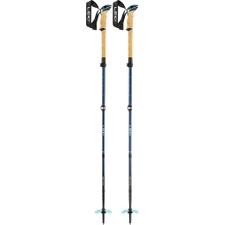 LekiBernina FX Carbon Foldable Pole Midnight Blue / Darkblue / Mint WomenMSRP 219,95 €189,95 €One size
LekiBernina FX Carbon Foldable Pole Midnight Blue / Darkblue / Mint WomenMSRP 219,95 €189,95 €One size
- - 17 %new
 KomperdellCarbon FXP.4 Expedition Vario Foldable Pole Black / SandMSRP 179,95 €149,95 €One size
KomperdellCarbon FXP.4 Expedition Vario Foldable Pole Black / SandMSRP 179,95 €149,95 €One size
- - 18 %new
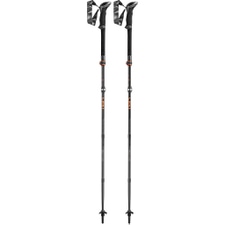 LekiMakalu FX Carbon Foldable Pole Black / Orange / Natural CarbonMSRP 194,95 €159,95 €One size
LekiMakalu FX Carbon Foldable Pole Black / Orange / Natural CarbonMSRP 194,95 €159,95 €One size
- - 17 %new
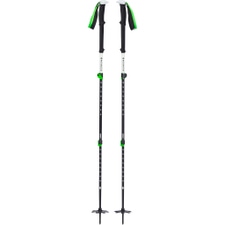 Black DiamondExpedition 3 Telescopic Pole No ColorMSRP 119,95 €99,95 €Available Sizes:125
Black DiamondExpedition 3 Telescopic Pole No ColorMSRP 119,95 €99,95 €Available Sizes:125 - - 20 %new
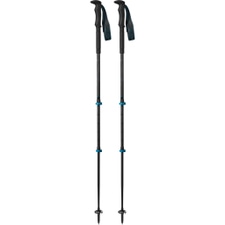 KomperdellCarbon C3 Pro Telescopic Pole Schwarz / BlauMSRP 149,95 €119,95 €One size
KomperdellCarbon C3 Pro Telescopic Pole Schwarz / BlauMSRP 149,95 €119,95 €One size
- - 17 %
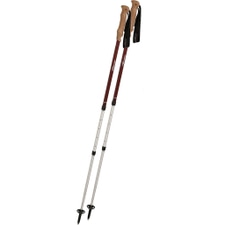 KomperdellHighlander Cork Telescopic Pole Silber / DunkelrotMSRP 59,95 €49,95 €One size
KomperdellHighlander Cork Telescopic Pole Silber / DunkelrotMSRP 59,95 €49,95 €One size
- - 18 %new
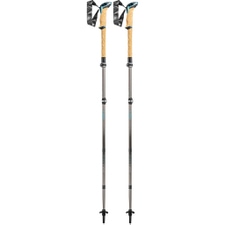 LekiCressida FX Carbon Foldable Pole Brownmetallic / Chocolate BrownMSRP 194,95 €159,95 €One size
LekiCressida FX Carbon Foldable Pole Brownmetallic / Chocolate BrownMSRP 194,95 €159,95 €One size
- - 17 %new
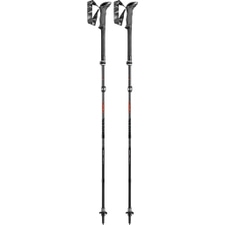 LekiMakalu FX Carbon AS Foldable Pole Light Anthracite / Bright Red / BlackMSRP 204,95 €169,95 €One size
LekiMakalu FX Carbon AS Foldable Pole Light Anthracite / Bright Red / BlackMSRP 204,95 €169,95 €One size
- - 18 %new
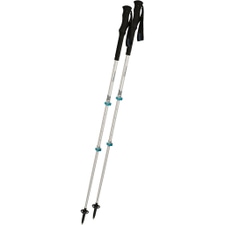 KomperdellExplorer Contour PL Telescopic Pole Silber / BlauMSRP 109,95 €89,95 €One size
KomperdellExplorer Contour PL Telescopic Pole Silber / BlauMSRP 109,95 €89,95 €One size
- - 18 %new
 Black DiamondTrail Telescopic Pole PicanteMSRP 109,95 €89,95 €One size
Black DiamondTrail Telescopic Pole PicanteMSRP 109,95 €89,95 €One size - - 14 %new
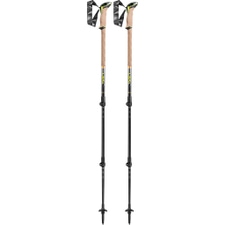 LekiSherpa Telescopic Pole Dark Anthracite / Copper / Neon YellowMSRP 139,95 €119,95 €One size
LekiSherpa Telescopic Pole Dark Anthracite / Copper / Neon YellowMSRP 139,95 €119,95 €One size
- - 9 %new
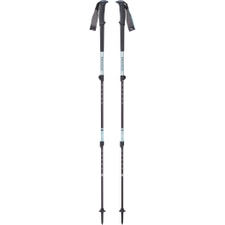 Black DiamondWomen's Trail Telescopic Pole Alpine Lake WomenMSRP 109,95 €99,95 €One size
Black DiamondWomen's Trail Telescopic Pole Alpine Lake WomenMSRP 109,95 €99,95 €One size - - 18 %new
 Black DiamondW Distance Carbon Z Foldable Pole Dark Patina WomenMSRP 169,95 €139,95 €Available Sizes:105110115120
Black DiamondW Distance Carbon Z Foldable Pole Dark Patina WomenMSRP 169,95 €139,95 €Available Sizes:105110115120 - - 17 %new
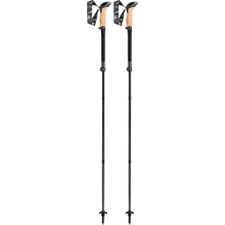 LekiBlack Series FX Carbon Foldable Pole Black / Natural CarbonMSRP 239,95 €199,95 €One size
LekiBlack Series FX Carbon Foldable Pole Black / Natural CarbonMSRP 239,95 €199,95 €One size
- - 14 %new
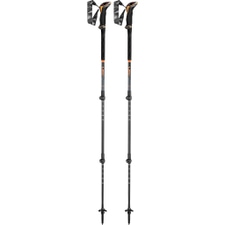 LekiSherpa Lite Telescopic Pole Neonorange / Black / Denim BlueMSRP 139,95 €119,95 €One size
LekiSherpa Lite Telescopic Pole Neonorange / Black / Denim BlueMSRP 139,95 €119,95 €One size
- - 9 %new
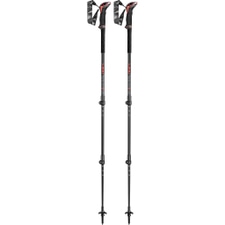 LekiMakalu Telescopic Pole Bright Red / Black / Dark AnthraciteMSRP 109,95 €99,95 €One size
LekiMakalu Telescopic Pole Bright Red / Black / Dark AnthraciteMSRP 109,95 €99,95 €One size
- - 18 %
 Black DiamondWomen's Trail Ergo Cork Telescopic Pole WomenMSRP 109,95 €89,95 €One size
Black DiamondWomen's Trail Ergo Cork Telescopic Pole WomenMSRP 109,95 €89,95 €One size - - 17 %new
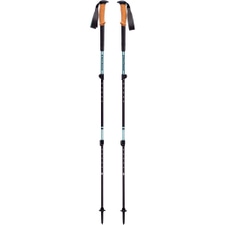 Black DiamondW's Cork Trekking Telescopic Pole Alpine Lake WomenMSRP 119,95 €99,95 €One size
Black DiamondW's Cork Trekking Telescopic Pole Alpine Lake WomenMSRP 119,95 €99,95 €One size - - 17 %new
 Black DiamondTrail Cork Trekking Telescopic Pole GraniteMSRP 119,95 €99,95 €One size
Black DiamondTrail Cork Trekking Telescopic Pole GraniteMSRP 119,95 €99,95 €One size - - 17 %new
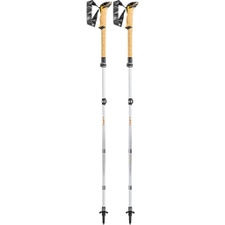 LekiCressida FX Carbon AS Foldable Pole White / Mango / Silver WomenMSRP 204,95 €169,95 €One size
LekiCressida FX Carbon AS Foldable Pole White / Mango / Silver WomenMSRP 204,95 €169,95 €One size
- - 20 %new
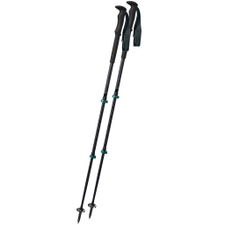 KomperdellCarbon C3 Pro Compact Telescopic Pole Schwarz / BlauMSRP 149,95 €119,95 €One size
KomperdellCarbon C3 Pro Compact Telescopic Pole Schwarz / BlauMSRP 149,95 €119,95 €One size
- - 11 %new
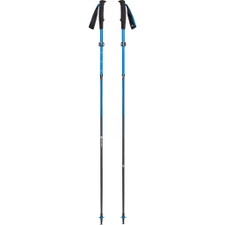 Black DiamondDistance Carbon FLZ Foldable Pole Ultra BlueMSRP 189,95 €169,95 €Available Sizes:125140
Black DiamondDistance Carbon FLZ Foldable Pole Ultra BlueMSRP 189,95 €169,95 €Available Sizes:125140 - - 12 %new
 LekiBlack Series Carbon Telescopic Pole Black / Black Grey / Dark AnthraciteMSRP 169,95 €149,95 €One size
LekiBlack Series Carbon Telescopic Pole Black / Black Grey / Dark AnthraciteMSRP 169,95 €149,95 €One size
- - 9 %new
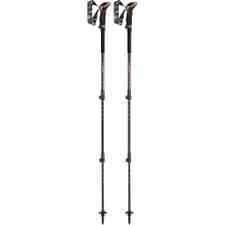 LekiMakalu Lite Telescopic Pole Orange / Black / Dark AnthraciteMSRP 109,95 €99,95 €One size
LekiMakalu Lite Telescopic Pole Orange / Black / Dark AnthraciteMSRP 109,95 €99,95 €One size
- - 14 %new
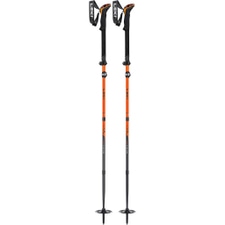 LekiSherpa FX Carbon Strong Telescopic Pole Orange / DenimblueMSRP 219,95 €189,95 €One size
LekiSherpa FX Carbon Strong Telescopic Pole Orange / DenimblueMSRP 219,95 €189,95 €One size
- - 9 %new
 LekiMakalu FX TA Foldable Pole Petrol / Black / SilvergrayMSRP 164,95 €149,95 €One size
LekiMakalu FX TA Foldable Pole Petrol / Black / SilvergrayMSRP 164,95 €149,95 €One size
- - 23 %new
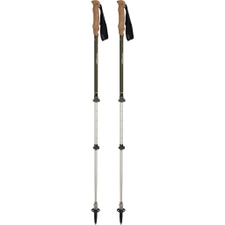 KomperdellShockmaster Cork Powerlock Telescopic Pole Grün / SilberMSRP 129,95 €99,95 €One size
KomperdellShockmaster Cork Powerlock Telescopic Pole Grün / SilberMSRP 129,95 €99,95 €One size
- - 23 %new
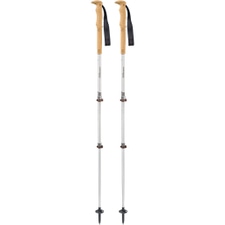 KomperdellExplorer Contour Cork Telescopic Pole Silber / BraunMSRP 129,95 €99,95 €One size
KomperdellExplorer Contour Cork Telescopic Pole Silber / BraunMSRP 129,95 €99,95 €One size
- - 11 %new
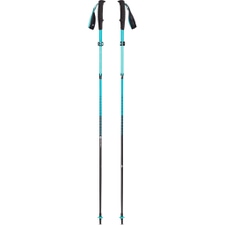 Black DiamondW Distance Carbon FLZ Pole Dark Patina WomenMSRP 189,95 €169,95 €Available Sizes:110125
Black DiamondW Distance Carbon FLZ Pole Dark Patina WomenMSRP 189,95 €169,95 €Available Sizes:110125 - - 23 %new
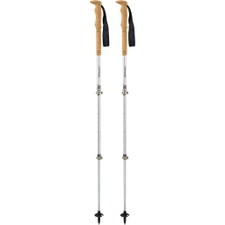 KomperdellExplorer Compact Cork Telescopic Pole Silber / Titan WomenMSRP 129,95 €99,95 €One size
KomperdellExplorer Compact Cork Telescopic Pole Silber / Titan WomenMSRP 129,95 €99,95 €One size
- - 18 %new
 KomperdellExplorer Compact PL Telescopic Pole Silber / RotMSRP 109,95 €89,95 €One size
KomperdellExplorer Compact PL Telescopic Pole Silber / RotMSRP 109,95 €89,95 €One size
- - 12 %new
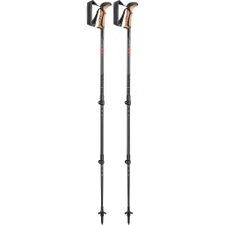 LekiKhumbu Telescopic Pole Dark Anthracite / White / Bright RedMSRP 84,95 €74,95 €One size
LekiKhumbu Telescopic Pole Dark Anthracite / White / Bright RedMSRP 84,95 €74,95 €One size
- - 50 %
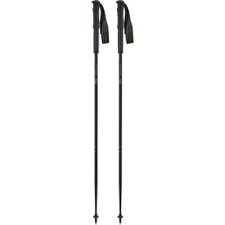 KomperdellCarbon.FXP Trail Foldable Pole Schwarz / BronzeMSRP 139,95 €69,95 €Available Sizes:105
KomperdellCarbon.FXP Trail Foldable Pole Schwarz / BronzeMSRP 139,95 €69,95 €Available Sizes:105
- - 11 %
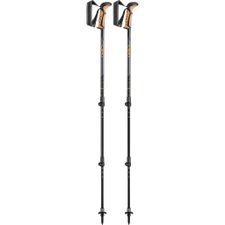 LekiKhumbu AS Telescopic Pole Dark Anthracite / Orange / BlackMSRP 94,95 €84,95 €One size
LekiKhumbu AS Telescopic Pole Dark Anthracite / Orange / BlackMSRP 94,95 €84,95 €One size
- - 13 %new
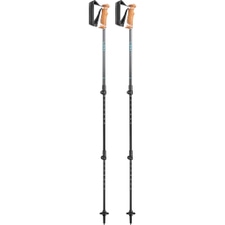 LekiLhasa Telescopic Pole Mint / Dark Anthracite / WhiteMSRP 74,95 €64,95 €One size
LekiLhasa Telescopic Pole Mint / Dark Anthracite / WhiteMSRP 74,95 €64,95 €One size
- new
 LekiLegacy Telescopic Pole Gunmetal-Petrol-Dark / Anthracite74,95 €One size
LekiLegacy Telescopic Pole Gunmetal-Petrol-Dark / Anthracite74,95 €One size
- - 8 %new
 LekiWanderfreund Makalu Telescopic Pole Gunmetal-Dark / Anthracite-CopperMSRP 64,95 €59,95 €One size
LekiWanderfreund Makalu Telescopic Pole Gunmetal-Dark / Anthracite-CopperMSRP 64,95 €59,95 €One size
- - 18 %new
 KomperdellCarbon FXP Approach Vario Foldable Pole Schwarz / BlauMSRP 169,95 €139,95 €One size
KomperdellCarbon FXP Approach Vario Foldable Pole Schwarz / BlauMSRP 169,95 €139,95 €One size
- - 9 %new
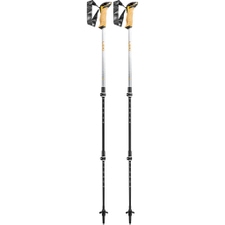 LekiCressida Telescopic Pole Mango / White / SilverMSRP 109,95 €99,95 €One size
LekiCressida Telescopic Pole Mango / White / SilverMSRP 109,95 €99,95 €One size
- - 16 %new
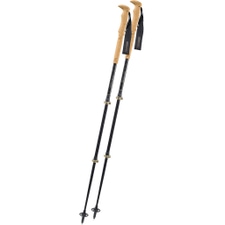 KomperdellCarbon C3 Cloud Compact Telescopic Pole Schwarz / TitanMSRP 189,95 €159,95 €One size
KomperdellCarbon C3 Cloud Compact Telescopic Pole Schwarz / TitanMSRP 189,95 €159,95 €One size
- - 18 %new
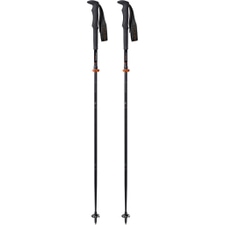 KomperdellCarbon FXP Approach Vario Compact Foldable Pole Schwarz / OrangeMSRP 169,95 €139,95 €One size
KomperdellCarbon FXP Approach Vario Compact Foldable Pole Schwarz / OrangeMSRP 169,95 €139,95 €One size
- - 16 %new
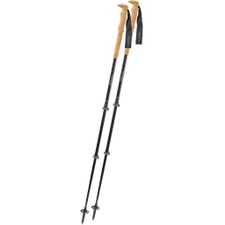 KomperdellCarbon C3 Cloud Telescopic Pole Schwarz / SilberMSRP 189,95 €159,95 €One size
KomperdellCarbon C3 Cloud Telescopic Pole Schwarz / SilberMSRP 189,95 €159,95 €One size
- new
 LekiLegacy Telescopic Pole Regal Blue-Darkblue-Cyan Kids49,95 €One size
LekiLegacy Telescopic Pole Regal Blue-Darkblue-Cyan Kids49,95 €One size
- new
 Black DiamondTrail Back Pole Creek Blue89,95 €One size
Black DiamondTrail Back Pole Creek Blue89,95 €One size - new
 LekiEagle Telescopic Pole Midnightblue Dark / Metallic-White44,95 €One size
LekiEagle Telescopic Pole Midnightblue Dark / Metallic-White44,95 €One size
- new
 Black DiamondTrail Back Pole Burnt Sienna89,95 €One size
Black DiamondTrail Back Pole Burnt Sienna89,95 €One size - new
 LekiMakalu Lite As Telescopic Pole Black-Dark / Anthracite-Petrol119,95 €One size
LekiMakalu Lite As Telescopic Pole Black-Dark / Anthracite-Petrol119,95 €One size
- new
 LekiCressida As Telescopic Pole Brownmetallic-Chocolate / Brown Metal119,95 €One size
LekiCressida As Telescopic Pole Brownmetallic-Chocolate / Brown Metal119,95 €One size


For every passionate hiker, hiking poles are part of the basic equipment. Whether for going uphill or downhill, hiking poles can support you on all your tours. From small to large, more and more outdoor enthusiasts do not want to miss the poles – and for good reason!
Why use trekking poles?
Trekking poles not only shift your weight on your legs, but also distribute it on your arms. This provides you with the necessary stability during your tour and supports your balance. In addition, your body weight is no longer supported only by your spine and knee joints, but also by your arms. This minimizes the stress on the joints so that you can finish your tour without pain. Uphill, poles give you more momentum, an upright gait and prevent back pain.
What should you look for when buying hiking poles?
Poles that are adjustable in length are commonly
referred to as telescopic poles or vario poles.
To adjust the length of the poles, we distinguish twist lock and clamping
system.
With a twist system, the segments are untwisted in opposite directions, this
allows you to adjust the length of your pole, when you reach the right length,
the segments are screwed back in place. These poles tend to be lightweight and
compact, but if too much stress is placed on them, it is quite possible for the
pole to “slip together”.
With a
clamping system, the correct length of your poles is fixed by clamps. These are
easy to use, flexible to adjust and usually can be adjusted without much
effort.

What is a folding pole? A folding pole consists mainly of
three segments. These segments are connected internally with a metal cord. When
in use, the three segments are inserted into each other, to store the sticks
the segments are folded like a “Z”. A distinction is made between
fixed-length folding poles and telescopic folding poles.
As the name of the fixed-length folding poles already says, these poles are
fixed in length and cannot be adjusted. Quite different from telescopic folding poles – these can be adjusted in length to suit different users.
Due to the small size of folding poles, they are ideal for trail running. They
do not require much storage space when you need to stow them in your backpack
during the faster passages. In addition, they are not very heavy and quickly
assembled.
What material should your trekking pole be made of? Carbon
or aluminum?
Carbon poles are very light and dampen your movements, which
protects your wrist. Especially on longer tours, the low weight is a great
advantage. No matter whether you have them in your hand or in your backpack.
Carbon, however, is said to be not very resilient and prone to breakage.
Poles made of aluminum, on the other hand, are more stable and cheaper. In
return, they are heavier and with too high or incorrect load, these can bend.
Normally, the poles can be bent back again. With aluminum sticks, the care
plays a role. If the poles get wet, it makes sense to dry them thoroughly to
prevent corrosion.

The different types of handles
Cork or foam? This question can be answered quite easily.
Grips made of cork absorb sweat better and are therefore ideal for summer. Foam
grips, on the contrary, are more suitable for winter. These are grippy and
non-slip despite gloves.
Rubber grips can rather be advised against, because you easily get blisters and
they become quite slippery due to sweat.
When do I use which pole?
Trekking, hiking and trail running poles are characterized
by their low weight. They are usually somewhat thicker and are composed of
three to four segments. These segments can be either folded or pushed. They are
also quite sturdy and can withstand high loads.
Nordic walking poles, on the other hand, are one-piece. Since they are not
subjected to heavy loads and are mostly used only on the flat, they are
slightly thinner, which makes them considerably lighter and ensures good power
transmission.
Which pole plates are suitable for what?
The so-called mud plates are used for hikes with soft
ground. The plates prevent your pole from sinking too far into the ground. They
are also designed to prevent your pole from getting stuck between boulders and
possibly breaking it.
With snow plates, it behaves similarly. These have a relatively large diameter
and should support you on your ski tour or winter hike and prevent the stick
from sinking in.
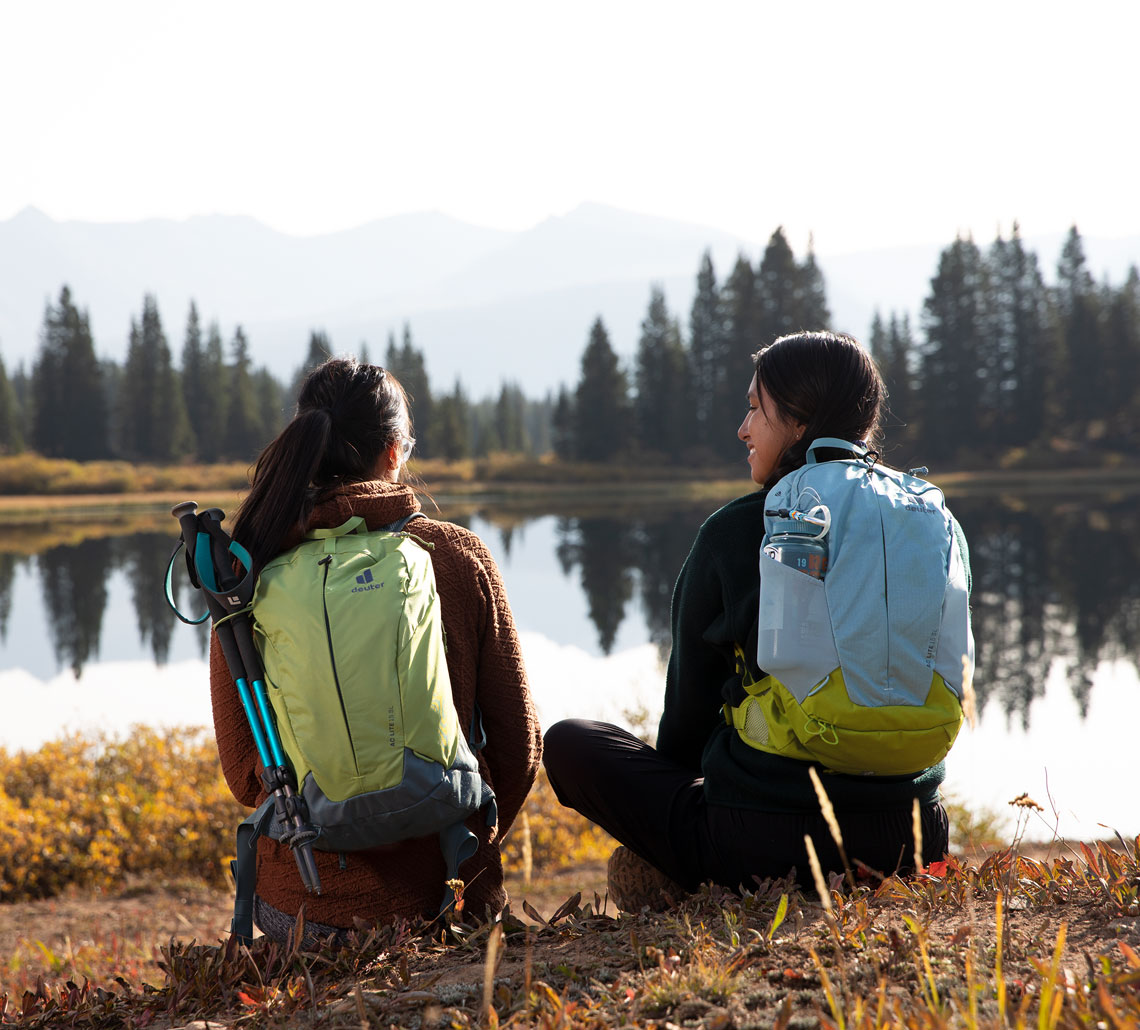
Furthermore, there are various rubber buffers in different degrees of hardness for the asphalt. These additionally cushion your body weight and are particularly gentle on elbows, shoulders and wrists. In the terrain, however, these attachments are anything but practical. Due to the damping, the pole gives way when going downhill and the rubber attachment is relatively slippery.
Which pole length is the right one for me?
When you hold the pole in your hand, your forearm should be at a 90-degree angle with your upper arm. However, when trying it out, note the height of your hiking, mountain or trekking boots, as the heel here can also be several centimeters high.
Hiking poles at Sport Conrad
In our online shop or in our stores, we offer a wide
selection of hiking poles of different brands. From Black Diamond to Komperdell
to Leki, in all colors, for children, women and men – there is something for
everyone!
In addition, there are all accessories, equipment and clothing, so that you are
optimally equipped for your next trip.